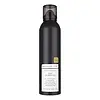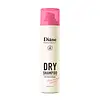What's inside
What's inside
 Key Ingredients
Key Ingredients

 Benefits
Benefits

 Concerns
Concerns

 Ingredients Side-by-side
Ingredients Side-by-side

Isobutane
Hydrofluorocarbon 152a
Dimethylimidazolidinone Rice Starch
AbsorbentAlcohol Denat.
AntimicrobialButane
Parfum
MaskingAluminum Starch Octenylsuccinate
AbsorbentWater
Skin ConditioningAcrylates Copolymer
Magnesium Carbonate
AbsorbentEthylhexyl Methoxycinnamate
UV AbsorberVp/Va Copolymer
Cetearamidoethyldiethonium Succinoyl Hydrolyzed Pea Protein
CleansingHypnea Musciformis Extract
Skin ProtectingGlycerin
HumectantSargassum Filipendula Extract
Skin ProtectingPanthenol
Skin ConditioningTetrahexyldecyl Ascorbate
AntioxidantSorbitol
HumectantCaprylic/Capric Triglyceride
MaskingAmp-Isostearoyl Hydrolyzed Wheat Protein
CleansingChamomilla Recutita Flower Extract
MaskingHelianthus Annuus Seed Oil
EmollientMangifera Indica Seed Butter
Skin ConditioningPersea Gratissima Oil
Skin ConditioningRicinus Communis Seed Oil
MaskingPentylene Glycol
Skin ConditioningCoco-Glucoside
CleansingGelidiella Acerosa Extract
Skin ProtectingT-Butyl Alcohol
PerfumingPhenoxyethanol
PreservativeAlgin
MaskingBHT
AntioxidantCarrageenan
Chitosan
Guar Hydroxypropyltrimonium Chloride
Skin ConditioningSorbitan Oleate
EmulsifyingXanthan Gum
EmulsifyingRhodiola Rosea Root Extract
EmollientEthylhexylglycerin
Skin ConditioningDenatonium Benzoate
MaskingIsobutane, Hydrofluorocarbon 152a, Dimethylimidazolidinone Rice Starch, Alcohol Denat., Butane, Parfum, Aluminum Starch Octenylsuccinate, Water, Acrylates Copolymer, Magnesium Carbonate, Ethylhexyl Methoxycinnamate, Vp/Va Copolymer, Cetearamidoethyldiethonium Succinoyl Hydrolyzed Pea Protein, Hypnea Musciformis Extract, Glycerin, Sargassum Filipendula Extract, Panthenol, Tetrahexyldecyl Ascorbate, Sorbitol, Caprylic/Capric Triglyceride, Amp-Isostearoyl Hydrolyzed Wheat Protein, Chamomilla Recutita Flower Extract, Helianthus Annuus Seed Oil, Mangifera Indica Seed Butter, Persea Gratissima Oil, Ricinus Communis Seed Oil, Pentylene Glycol, Coco-Glucoside, Gelidiella Acerosa Extract, T-Butyl Alcohol, Phenoxyethanol, Algin, BHT, Carrageenan, Chitosan, Guar Hydroxypropyltrimonium Chloride, Sorbitan Oleate, Xanthan Gum, Rhodiola Rosea Root Extract, Ethylhexylglycerin, Denatonium Benzoate
Alcohol Denat.
AntimicrobialAluminum Starch Octenylsuccinate
AbsorbentPropylene Glycol
HumectantIsopropyl Myristate
EmollientMenthol
MaskingSimmondsia Chinensis Seed Oil
EmollientEpilobium Angustifolium Flower/Leaf/Stem Extract
Skin ConditioningO-Cymen-5-Ol
AntimicrobialSalicylic Acid
MaskingSalvia Officinalis Leaf Extract
CleansingMentha Piperita Leaf Extract
Skin ConditioningEucalyptus Globulus Leaf Extract
PerfumingCymbopogon Schoenanthus Leaf/Stem Extract
Skin ConditioningHydrolyzed Keratin
HumectantArgania Spinosa Kernel Oil
EmollientMangifera Indica Seed Oil
EmollientCrataegus Cuneata Fruit Extract
Skin ConditioningZiziphus Jujuba Fruit Extract
Skin ConditioningPyrus Malus Fruit Extract
Skin ConditioningCitrus Grandis Fruit Extract
AstringentCitrus Aurantifolia Juice
CleansingCitrus Aurantium Dulcis Juice
Skin ConditioningCitrus Limon Juice
Skin ConditioningCeramide EOP
Skin ConditioningCeramide Ng
Skin ConditioningCeramide NP
Skin ConditioningCeramide Ag
HumectantCeramide AP
Skin ConditioningQuaternium-18
Quaternium-33
Cholesterol
EmollientAroma
Butylene Glycol
HumectantSodium Metabisulfite
AntioxidantWater
Skin ConditioningIsopropyl Alcohol
SolventDistearyldimonium Chloride
Phenoxyethanol
PreservativeCitric Acid
BufferingAlcohol Denat., Aluminum Starch Octenylsuccinate, Propylene Glycol, Isopropyl Myristate, Menthol, Simmondsia Chinensis Seed Oil, Epilobium Angustifolium Flower/Leaf/Stem Extract, O-Cymen-5-Ol, Salicylic Acid, Salvia Officinalis Leaf Extract, Mentha Piperita Leaf Extract, Eucalyptus Globulus Leaf Extract, Cymbopogon Schoenanthus Leaf/Stem Extract, Hydrolyzed Keratin, Argania Spinosa Kernel Oil, Mangifera Indica Seed Oil, Crataegus Cuneata Fruit Extract, Ziziphus Jujuba Fruit Extract, Pyrus Malus Fruit Extract, Citrus Grandis Fruit Extract, Citrus Aurantifolia Juice, Citrus Aurantium Dulcis Juice, Citrus Limon Juice, Ceramide EOP, Ceramide Ng, Ceramide NP, Ceramide Ag, Ceramide AP, Quaternium-18, Quaternium-33, Cholesterol, Aroma, Butylene Glycol, Sodium Metabisulfite, Water, Isopropyl Alcohol, Distearyldimonium Chloride, Phenoxyethanol, Citric Acid
Ingredients Explained
These ingredients are found in both products.
Ingredients higher up in an ingredient list are typically present in a larger amount.
Alcohol Denat. is an alcohol with a denaturant property. It is created by mixing ethanol with other additives.
This ingredient gets a bad rep because it is irritating and drying - mostly due to its astringent property. Astringents draw out natural oils in tissue, constricting pores and leaving your skin dried out.
However, alcohol denat. is not all that bad.
Due to its low molecular weight, alcohol denat. tends to evaporate quickly. One study on pig skin found half of applied alcohol evaporated in 10 seconds and less than 3% stayed on skin.
This also helps other ingredients become better absorbed upon application.
Studies are conflicted about whether this ingredient causes skin dehydration. One study from 2005 found adding emollients to propanol-based sanitizer decreased skin dryness and irritation. Another study found irritation only occurs if your skin is already damaged.
Small amounts of alcohol are generally tolerated by oily skin or people who live in humid environments.
The rule of thumb is if this alcohol is near the end of an ingredients list, it will probably not affect your skin much.
Also...
This ingredient has antimicrobial and solvent properties.
The antimicrobial property helps preserve products and increase their shelf life. As a solvent, it helps dissolve other ingredients.
Other types of astringent alcohols include:
Learn more about Alcohol Denat.Aluminum Starch Octenylsuccinate is a synthetic powder used as an absorbent, thickener, and anti-caking agent.
As an absorbent, it is great at mattifying skin by soaking up the oil. This is why you'll find it in a range of products from makeup to moisturizers.
This ingredient is considered a modified starch. Starch can also be found naturally in plants.
One study from 1991 found that 5% of this ingredient enhanced titanium dioxide SPF by as much as 40%. The study found 1% titanium dioxide had a 5.6 SPF and adding 5% of aluminum starch octenylsuccinate boosted it to an SPF of 8.1
Although “aluminum” in an ingredient name can raise red flags for some consumers, the form and usage context matter significantly. For typical topical applications, there is no substantial evidence of health risks - such as cancer, neurotoxicity, or systemic “aluminum overload.”
Learn more about Aluminum Starch OctenylsuccinatePhenoxyethanol is a preservative that has germicide, antimicrobial, and aromatic properties. Studies show that phenoxyethanol can prevent microbial growth. By itself, it has a scent that is similar to that of a rose.
It's often used in formulations along with Caprylyl Glycol to preserve the shelf life of products.
Water. It's the most common cosmetic ingredient of all. You'll usually see it at the top of ingredient lists, meaning that it makes up the largest part of the product.
So why is it so popular? Water most often acts as a solvent - this means that it helps dissolve other ingredients into the formulation.
You'll also recognize water as that liquid we all need to stay alive. If you see this, drink a glass of water. Stay hydrated!
Learn more about Water